Must-Visit 4 Famous Temples in Karnaprayag, Uttarakhand, India
Uttarakhand is known as the land of the God, the temples in Karnaprayag are an essential part of the region’s spiritual and cultural heritage. This sacred town, located at the confluence of the Alaknanda and Pindar rivers, is home to several ancient temples dedicated to various deities, including Uma Devi, Chandika Devi, and Karna.
These temples in Karnaprayag attract devotees from across India, especially as part of the Panch Badri pilgrimage circuit. The serene atmosphere, combined with the spiritual significance and historical relevance of these temples, makes Karnaprayag a must-visit destination for those seeking spiritual solace and cultural immersion.
Here is the list of the Top 4 Famous Temples in Karnaprayag in Uttarakhand
Quick Look: Temples in Karnaprayag
1- Karna Temple in Karnapraya
2- Uma Devi Temple in Karnaprayag
3- Chandika Devi Temple, Karnaprayag
4- Adi Badri, Karnaprayag
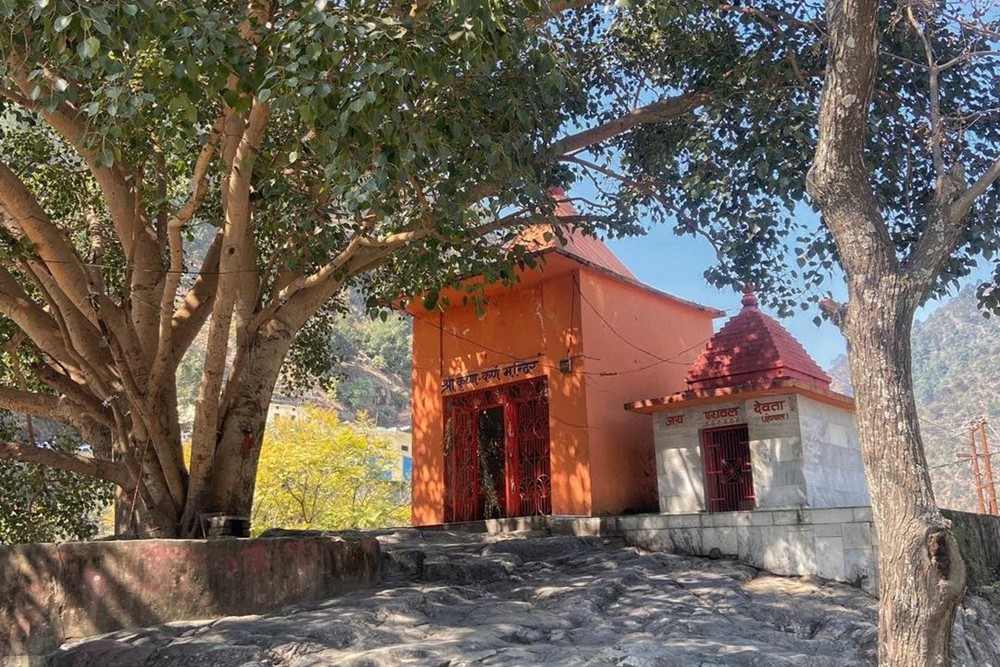
1- Karna Temple in Karnaprayag
Located in the Karnaprayag city of Uttarakhand, the Karna Temple sits atop a massive boulder at the confluence of the Alaknanda and Pindar Rivers. The temple is dedicated to Karna, the heroic figure from the Mahabharata, known for his unmatched righteousness and generosity among the Pandava siblings.
It is believed that Karna meditated here to please the Sun God (his father), and thus, the place came to be known as Karnaprayag. It is one of the five revered prayags (river confluences) in Uttarakhand, each of immense religious significance.
Mythology Behind Karna Temple
- One of the popular legends associated with this temple is that Karna meditated at this very spot to gain the favor of the Sun God. In response, the deity granted him the impregnable armor (Kavacha), which made him nearly invincible in battle.
- Another significant legend ties the temple to Lord Krishna. It is believed that Karnaprayag is the site where Krishna performed the cremation of Karna after his tragic death. When Arjuna mortally wounded Karna, Krishna realized that Karna was not truly dead, as the Dharma-Devi (goddess of righteousness) was protecting him due to the immense charitable deeds he had performed throughout his life. With Dharma on his side, Karna could not be killed.
- Understanding that Karna’s good deeds made him invincible under the protection of Dharma, Krishna disguised himself as a Brahmin and asked Karna to give away his good merits as charity.
- Though on his deathbed, Karna generously gave all his merits to the Brahmin. Once this was done, the Dharma-Devi disappeared, allowing Krishna to signal Arjuna to deliver the final blow. Before Karna died, Krishna granted him a glimpse of his Vishwaroopam (divine universal form).
- Karna, in his last moments, requested that he be buried in a virgin land. Krishna honored this request and personally cremated Karna at the holy land of Karnaprayag, making it a sacred site in Hindu mythology.
The Karna Temple is located in Karnaprayag, a town in Uttarakhand, near the confluence of the Pindar and Alaknanda Rivers.
How to Reach Karna Temple
The Karna Temple is situated at the sacred confluence of the Alaknanda and Pindar rivers in Karnaprayag, a town along National Highway NH-58, which connects Delhi to Badrinath.
To reach the temple:
- By Road: You can travel by bus from Rishikesh to Karnaprayag, with regular buses available daily. The distance from Rishikesh to Karnaprayag is approximately 172 km, passing through Rudraprayag and Srinagar.
- By Train: The nearest railway station is Karnaprayag itself, which is well connected by rail to major cities in the region.
- By Air: The nearest airport is Jolly Grant Airport in Dehradun, located about 213 km away from Karnaprayag. From the airport, you can hire a taxi or take a bus to reach the temple.
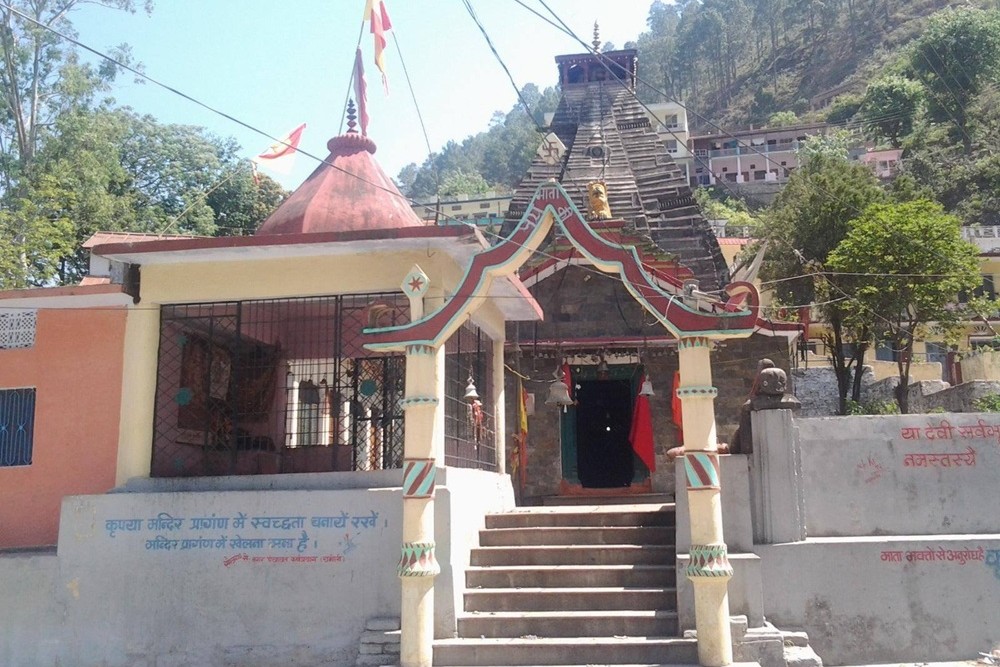
2- Uma Devi Temple in Karnaprayag
The Uma Devi Temple in Karnaprayag is a sacred place dedicated to Goddess Parvati, also known as Gauri, the daughter of the Himalayas. The temple holds her ‘Swayambhu’ idol, which has been worshipped here for centuries. This temple is situated near the holy confluence of the Alaknanda and Pindar River, making it a spiritually powerful place.
- The Uma Devi Temple is the second most respected Hindu shrine in Karnaprayag and is celebrated as a Shaktipeeth. People from all walks of life visit this temple to seek the blessings of the goddess.
Local Legend of Uma Devi Temple
- According to local beliefs, Uma Devi appeared in front of a Dimri Pundit and instructed him to build a temple for her at the confluence of the Pindar and Alaknanda River.
Festivals and Fairs at Uma Devi Temple
- Every twelve years, the Uma Devi Temple holds a grand procession where the idol of Goddess Uma is taken to Dimmer village, her maternal home. Many villagers join in this procession, which is celebrated with great enthusiasm.
History of Uma Devi Temple
- The Uma Devi Temple was established in the early 20th century and is considered the home of Goddess Uma. It holds significant religious importance for the locals, making it an essential part of their spiritual life.
Location of Uma Devi Temple
- The Uma Devi Temple is located in Karnaprayag, near the Karnaprayag Bridge that spans the Alaknanda River.
How to Reach Uma Devi Temple
- The temple is situated at the holy confluence of the Alaknanda and Pindar Rivers, on NH-58, the Badrinath Highway in Uttarakhand. It is positioned close to the Karnaprayag Bridge over the Alaknanda River.
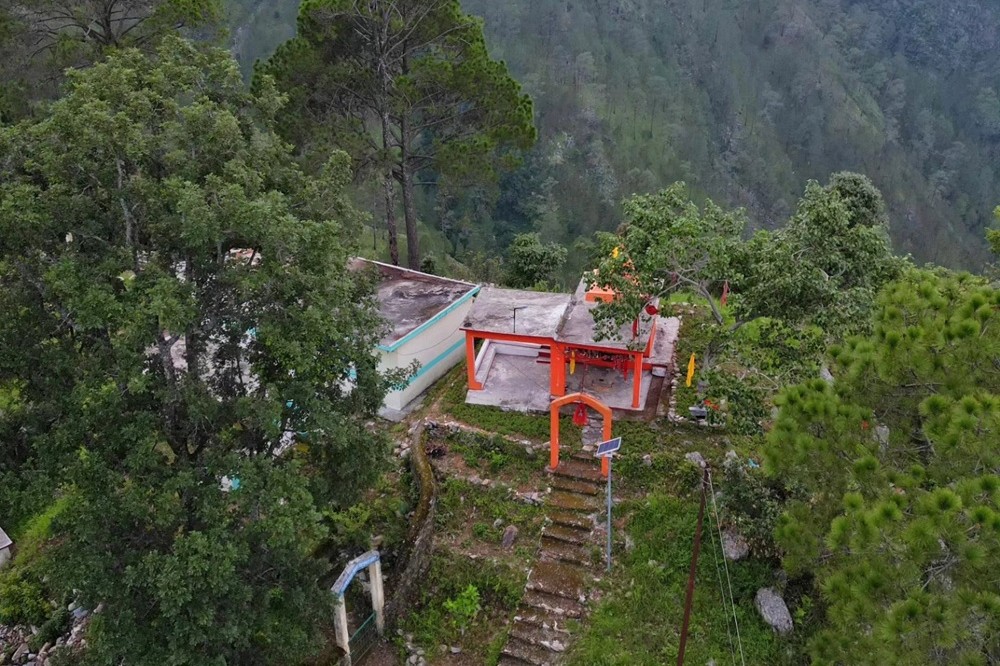
3- Chandika Devi Temple
The Chandika Devi Temple, also known as Sri Raj Rajeshwari Chandika Mata Mandir, is dedicated to the Hindu Goddess Kali Mata, who is believed to destroy evil forces. Located in the small village of Simli in Karnaprayag, Uttarakhand, this temple is often visited by tantriks and sages. The temple houses idols of prominent regional deities, including Gol, Govind, Gunsai, Chandika Devi, and Raj Rajeshwari Devi, making it a significant spiritual site in the region.
Location of Chandika Devi Temple
- Distance: 6 km / 15 mins from Karnaprayag
- Travel from: State Bank of India, Badrinath Road, Karnaprayag
- Exploration Time: 30 minutes
Religious Significance of Chandika Devi Temple
- Chandika Devi is considered the most powerful and fierce form of Kali Mata, but also a compassionate and caring mother. This tantric shrine is dedicated to Kali Mata, and thousands of devotees visit it to seek the goddess’s blessings. It is believed that those who place their faith in the deity are blessed by her divine power.
- In the past, devotees offered goats and fowls as sacrifices to appease the goddess. However, this practice has now been replaced with offerings of sweetmeats and coconuts, which are presented to the goddess during visits.

4- Adi Badri, Karnaprayag
A Spiritual and Natural Haven in Uttarakhand
Adi Badri, also known as Chandpurgadhi, is a stunning tehsil located in the beautiful Chamoli district of Uttarakhand, India. Sitting at an elevation of 1,800 meters above sea level, this peaceful region is known for its rich cultural heritage, breathtaking natural beauty, and spiritual significance.
Surrounded by lush greenery, towering mountains, and ancient temples, Adi Badri is an important stop in the sacred Panch Badri pilgrimage circuit, attracting both spiritual seekers and nature lovers from all over the world.
The name “Adi Badri” comes from the Adi Badri Temple Complex, a collection of ancient temples dedicated to Lord Vishnu and other deities.
These temples, which date back to between the 8th and 12th centuries, are masterpieces of Nagara architecture and are deeply woven into the spiritual and cultural life of the region. Adi Shankaracharya is believed to have founded these temples, seeing the site as a place for devotion and learning.
Adi Badri also has historical importance. Close by is the Chandpurgarh Fort, which served as the first capital of the Panwar dynasty of Garhwal. This dynasty ruled the area before moving their capital to Dewalgarh, Srinagar, and ultimately to Tehri. This historical aspect adds even more allure to the already captivating Adi Badri.
Location and Administrative Importance
Adi Badri is located in the Garhwal region of Uttarakhand, approximately 15 kilometers from Karnaprayag, on the way to Dwarahat in Kumaon. The tehsil headquarters, listed as Helisera in the revenue records, serves as the administrative center for 69 nearby villages. The region is divided into five administrative zones, known as pattis:
- Adi Badri Temples in Karnaprayag
- Kanswa Temples in Karnaprayag
- Dewalkot Temples in Karnaprayag
- Mathar Temples in Karnaprayag
- Silpata Temples in Karnaprayag
Each zone is managed by a Patwari, who oversees both revenue and police responsibilities, ensuring an organized administrative structure in the region.
Adi Badri Temple Complex: A Spiritual Marvel
The Adi Badri Temple Complex lies at the heart of the region’s spiritual identity, forming an essential part of the Panch Badri pilgrimage circuit. Built between the 8th and 12th centuries, the temple is dedicated to Lord Vishnu, with additional shrines dedicated to several other deities.
Architectural Brilliance
Originally consisting of 16 temples, the complex now has 14 remaining structures, each showcasing the Nagara architectural style. The main shrine is dedicated to Lord Vishnu, while the other temples honor:
- Gaurishankar (Lord Shiva and Parvati)
- Annapurna (Goddess of nourishment)
- Surya (Sun God)
- Durga Temples in Karnaprayag
- Ganesh Temples in Karnaprayag
- Satyanarayan (an avatar of Vishnu)
- Garuda Temples in Karnaprayag
- Janki (Sita) Temples in Karnaprayag
The intricate carvings and designs highlight the exceptional craftsmanship of ancient artisans. The temple complex is believed to have been established under the guidance of Adi Shankaracharya, a revered figure in Indian spirituality.
Significance in Hindu Mythology
The name Adi Badri, meaning “First Badri”, reflects its importance as a precursor to the famous Badrinath Temple. For centuries, it has been a sacred destination for spiritual seekers and devotees, further enhancing its revered status in Hindu mythology.
Karnaprayag Temple Karnaprayag Temple Karnaprayag Temple Karnaprayag Temple Karnaprayag Temple
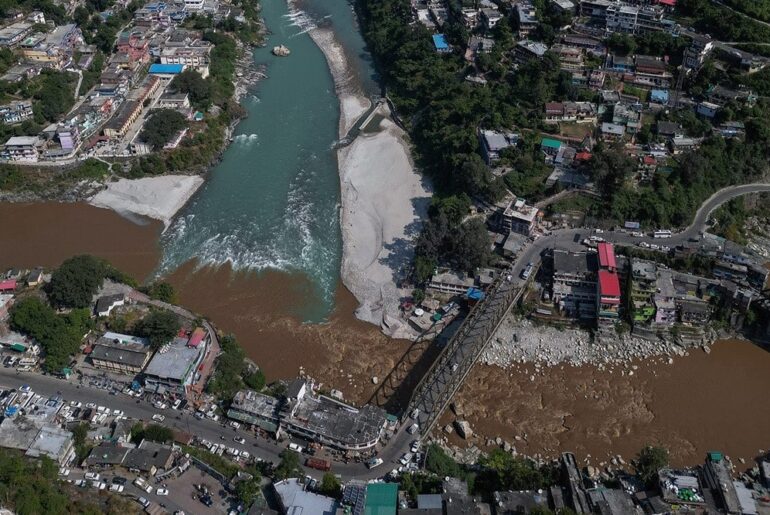
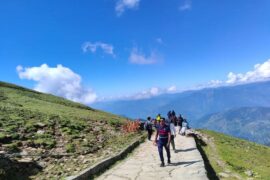
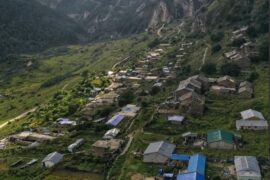
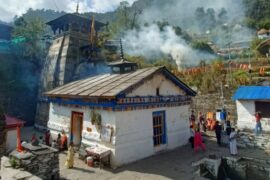
Comments are closed.